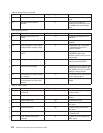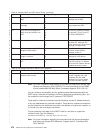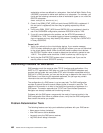
Important!: When you do a cold start, all unprocessed SMTP distributions found in
the system are destroyed. Mail will be lost.
Warm Start
To cause a warm start to occur and free only the first floater mail control block
found the next time SMTP starts up, use this command:
CRTDTAARA DTAARA(QUSRSYS/QTMSCLEAN) TYPE(*CHAR)
LEN(1) VALUE('W') AUT(*ALL)
Once the clean-up is complete, code within SMTP deletes the QTMSCLEAN data
area from library QUSRSYS (provided the data area was created using the *ALL
authority).
Determining Problems with the POP Server
The Post Office Protocol (POP) has multiple personalities. The standard POP
server is similar to other TCP/IP functions and applications. The Client Access
connections to the POP server come in IP, IPX and SNA versions. All of these
versions run in subsystem QSYSWRK and produce job logs. If the POP server jobs
end or if mail is not getting to the destination these job logs can be used to
determine the cause.
Problems with Mail Delivery
The POP server requires the SMTP and QMSF products to be running in
subsystem QSYSWRK for mail to be delivered. If these products are not running,
the client can make a connection to the POP server, but no mail can be received by
the client. OfficeVision/400 and the QSNADS subsystem must also be operational
to allow the exchange of mail between POP clients and OfficeVision clients or to
allow the connection of SNA clients to the POP server. For Client Access
connections, the “Host Servers” must also have been started using the Start Host
Server (STRHOSTSVR) command. IPX must also be running for the POP IPX
server to function.
Note: If IPX is not running, the POP IPX server will fail on startup and post a job
log stating that IPX is not running.
Entries in the System Distribution Directory (SDD) are required for mail to be
delivered to a POP client. Each attached client must have:
v A user profile and valid password on the AS/400
v An entry in the SDD for that user with a valid SMTP address entry. (See “Adding
POP Mail Users to the System Distribution Directory” on page 289 for details.)
Problems with the POP server are generally associated with improperly set up
entries in the SDD or improperly set up clients. Ensure that all of your SDD entries
are correct and follow the instructions for setup that come with your POP client.
Note: Remember, only clients that support a POP connection can be connected to
the POP server.
Other things to check:
476 OS/400 TCP/IP Configuration and Reference V4R4


















